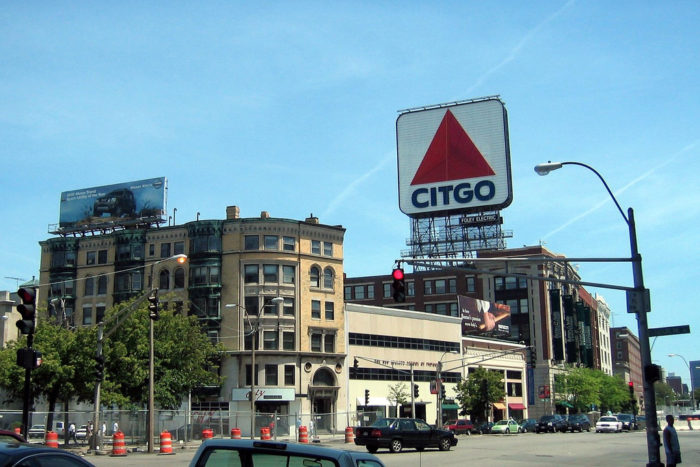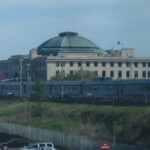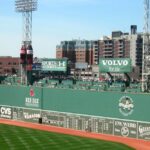A Boston Landmark Is Threatened.
There is angst in the City of Boston. Unless cooler heads and goodwill prevail, it’s possible that an iconic landmark will disappear. Not a building, not a statue, but revered nonetheless.

It’s the Citgo Sign.
The Citgo Sign is a big billboard. In fact, measuring 60 feet by 60 feet, it’s a very big billboard. It lights up and changes colors on both sides and Bostonians get their bearings from it. Furthermore, it’s seen by millions on television when the cameras follow the flight of a home run hit over The Green Monster, the 37-foot high left field wall of Fenway Park, home of the Red Sox. As the baseball drops onto Lansdowne Street, there in the background, is the Citgo Sign.
Earlier iterations of the sign have been sitting atop 660 Beacon Street, a seven story building fronting on Kenmore Square, since 1940. Its original sponsor was Cities Service. (Who else here remembers The Cities Service Band of America, conducted by Paul Lavalle?) Cities Service morphed into Citgo Petroleum Corp., which was eventually purchased by Petróleos de Venezuela SA, the national oil company of Venezuela.
Meanwhile, the building at 660 Beacon Street has also been sold and the new landlord, Related Beal, a developer from New York, thinks the annual rental of $250,000 is well below fair market value. Outside experts agree, pegging a more appropriate number at $2 million or even more.
That doesn’t please Petróleos, of course. The sign is good for name recognition, but over the years, the number of Citgo stations in the greater Boston area has dwindled to a handful. Apparently they are willing to swallow a quarter of a million bucks, albeit grudgingly, given the current state of the Venezuelan economy, but not a figure eight times that amount.
City officials and civic leaders are urging compromise and pushing for a negotiated agreement. And there’s an on-line petition to Save the Sign. I’ve already signed it.




